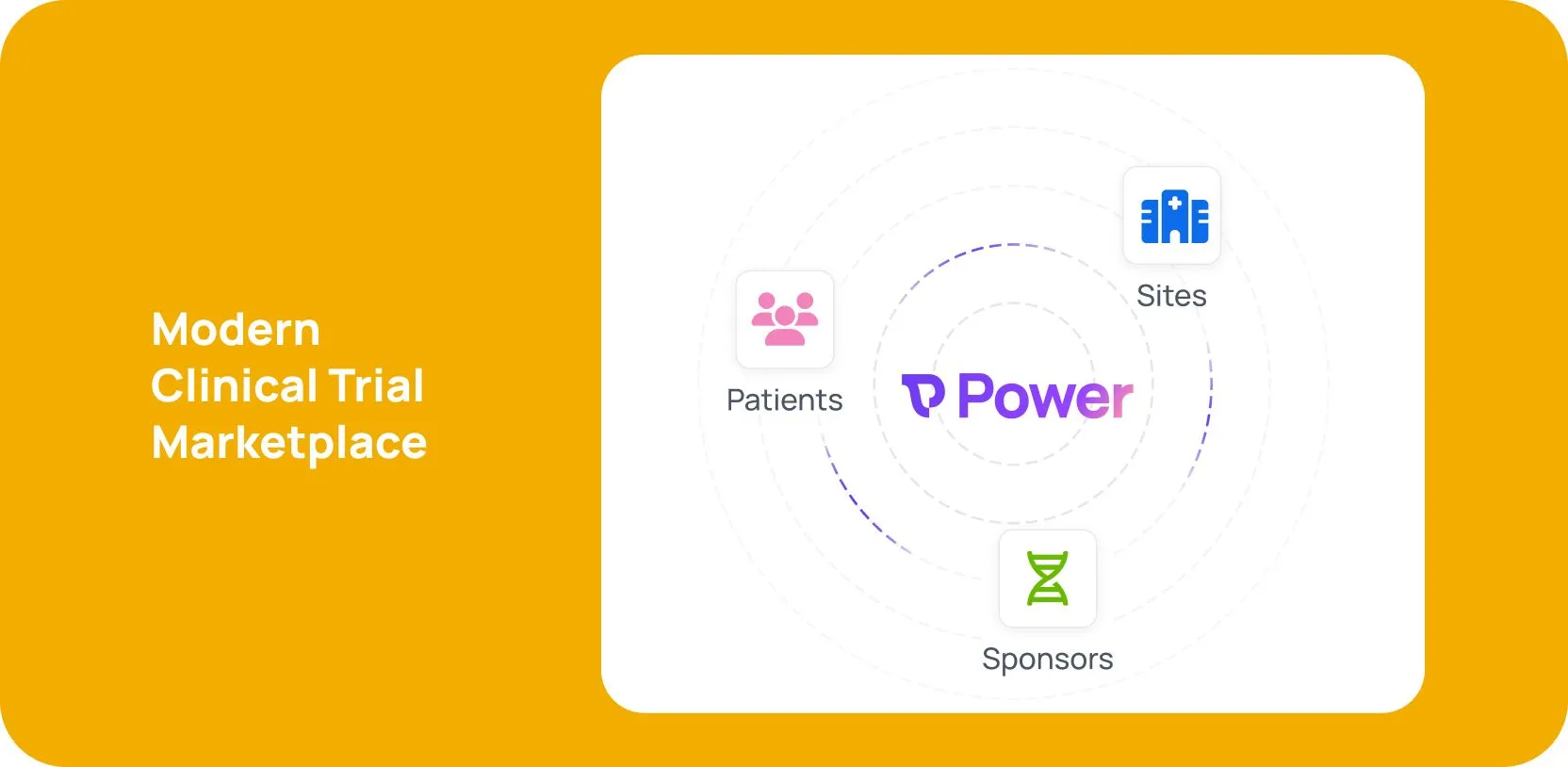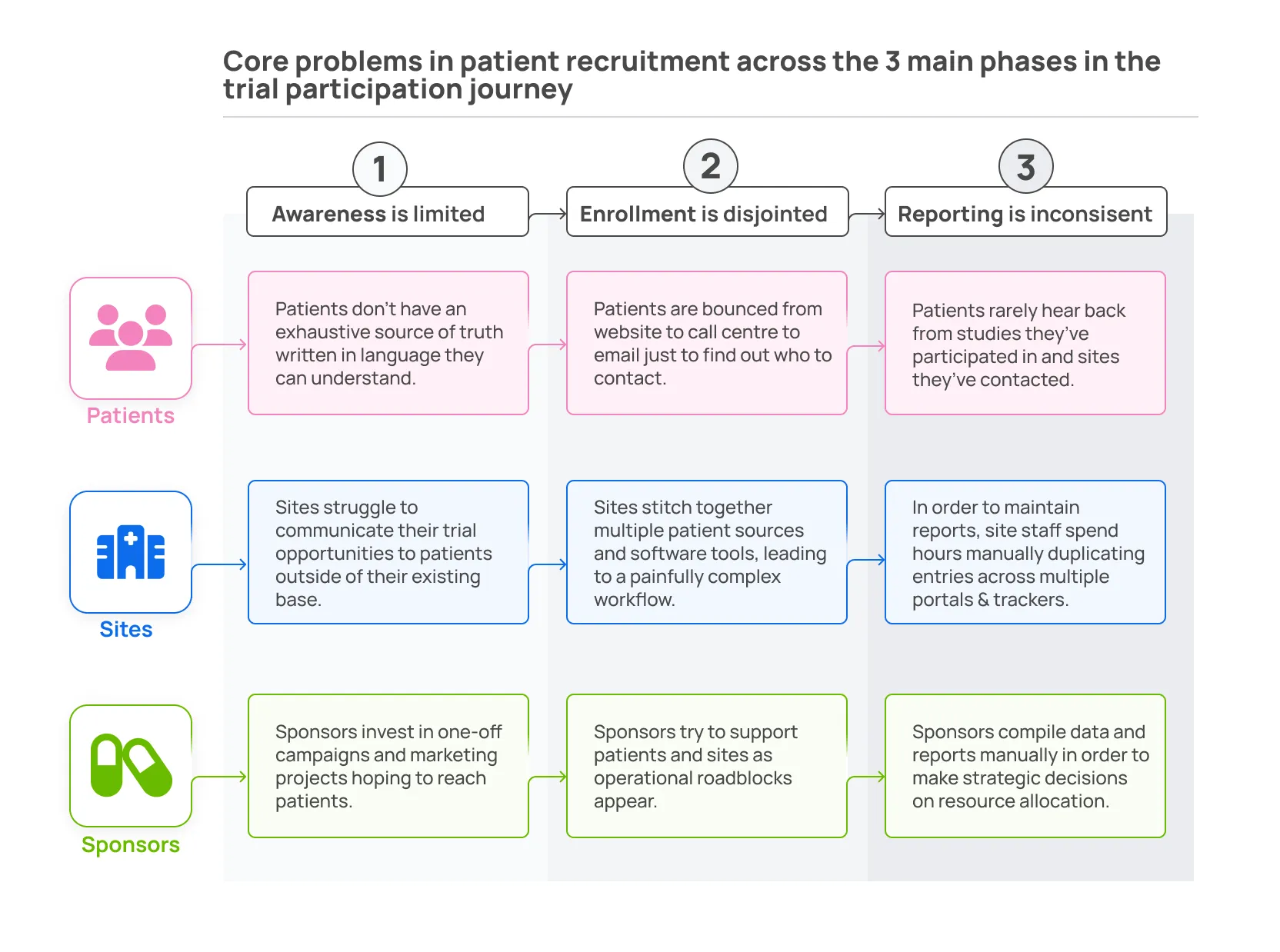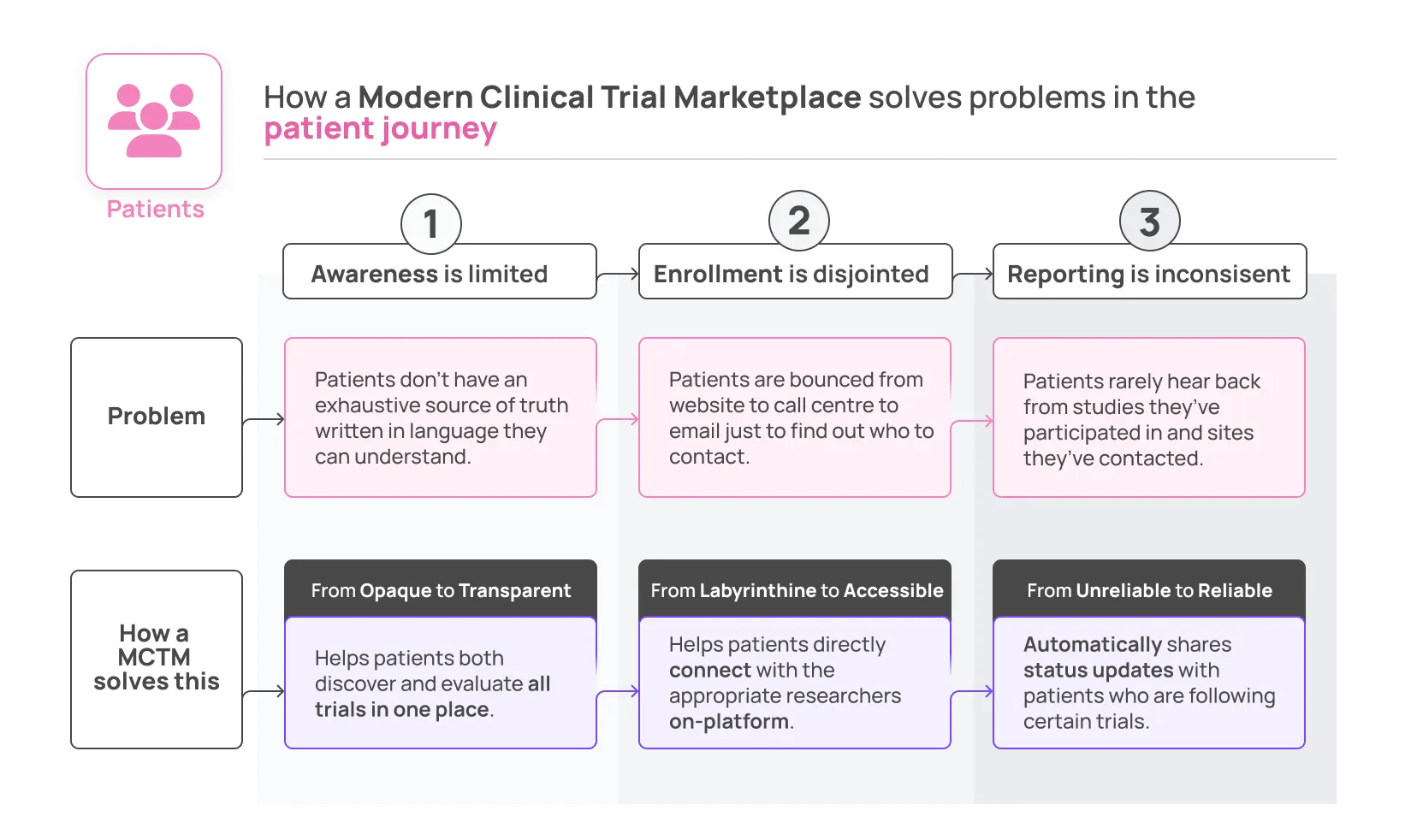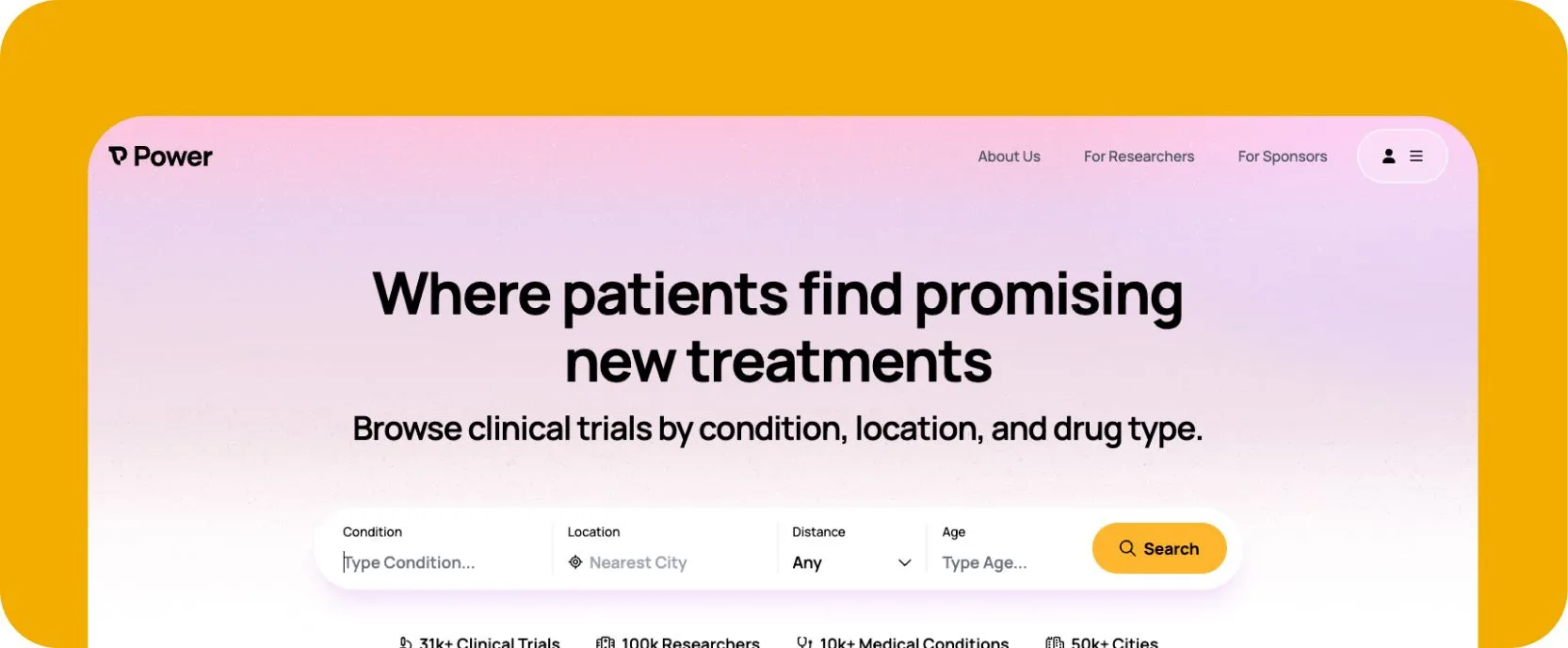Your session is about to expire
Patient focus: How the Modern Clinical Trial Marketplace solves problems in the patient recruitment journey

In our blog post, Introducing a Modern Clinical Trial Marketplace, a new approach to patient recruitment, we introduced the concept of a Modern Clinical Trial Marketplace as a way to solve the biggest challenges in patient recruitment today. Namely, the fact that the current system has too much friction and does not allow for the 3 core stakeholders required for successful patient recruitment to engage with each other quickly, transparently and in real time.
The Modern Clinical Trial Marketplace aims to address these issues by creating a marketplace where all 3 core stakeholders - patients, sites and sponsors - can engage with each other seamlessly. If you haven’t read the intro piece, we recommend checking it out - it’s a quick 5 min read.
Let’s break down how a Modern Clinical Trial Marketplace can solve fundamental problems for patients, sites, and sponsors throughout the trial journey. The summary table below breaks down the core problems in patient recruitment across the three main phases in the trial participation journey: awareness, enrollment, and reporting. We examine these stages from the perspective of our three core stakeholders: patients, sites, and sponsors.
We believe that:
- Awareness is limited: None of the required stakeholders are able to easily find each other and make the first connection
- Enrollment is disjointed: There is no integrated system for the required stakeholders to engage with each other
- Reporting is inconsistent: There is a complete lack of real-time inputs that would enable informed and coherent decisions

In this blog, we’ll focus on the patient and dive into how the Modern Clinical Trial Marketplace solves problems in the patient journey.
Part 1: Solving the patient's problems.

“I don’t have a family doctor and I’m looking to participate in a trial, but none of the information I can find online makes sense to me.” - Patient
Problems in the patient journey
Awareness: It is almost impossible for patients to seek out a clinical trial. The only standardized source of information is clinicaltrials.gov, which is opaque and confusing. Other information about clinical trials is spread across multiple sources, including online databases, healthcare provider websites, and patient advocacy group websites. There is no way for patients to find all the information they need in one place.
Enrollment: If patients do find a trial, it does not always provide the most up-to-date information about study status, or eligibility criteria. The site contact info is rarely updated if it’s included at all, causing labyrinthine and overly lengthy enrollment journeys.
Reporting: Finally, reporting is unreliable. Patients often don’t hear back from trials they’ve contacted, and they are infrequently contacted with information on studies they’ve participated in.
Unless patients are targeted by an ad or identified by their physician (top-down recruitment), they are unlikely to find and enroll in a trial.
How a Modern Clinical Trial Marketplace makes the journey transparent, accessible, and reliable for patients
In a Modern Clinical Trial Marketplace, transparent, plain-language information on every trial a patient may qualify for is available in one place and searchable along several dimensions like condition, treatment type, disease stage, genetic markers, and age.
A key feature of this Marketplace is an accessible platform that makes it easy and intuitive for sites to update contact information and pre-screeners, and view all applications in one place the moment they come in. This feature facilitates quick, on-platform connections between sites and patients, thereby ensuring that patients receive fast responses instead of falling through the cracks.
Finally, the platform should facilitate the automatic sharing of trial updates for patients who are involved in or choose to follow certain trials. This transparency improves the perceived reliability of the platform for patients and increases user satisfaction.
When patients can trust and understand their clinical trials resource, they will become repeat users. Over time, the platform will become the most comprehensive source of patients for sites and sponsors because patients want to be on it.
How this looks in practice on Power
- Search: Patients can search by condition, location, distance and/or age to start.
- Filter: Patients can get granular by filtering for effectiveness, safety, placebo, specific trial details (e.g., treatment administration, phase etc.) or specific patient details (e.g., stage of condition, genetic markers etc.)
- Trial information: All information is written in easy to understand language, and is clearly organized so patients can find all the information they need.
- Eligibility score: Patients can see their eligibility for each trial so they can immediately evaluate whether the trial could be a good fit.
- Connect: Patients can apply right on the platform and connect with the site directly.
In future blog posts, we’ll deep dive into how a Modern Clinical Trial Marketplace addresses the current systemic issues we see across the patient recruitment journey - Awareness, Enrollment and Reporting - for the other core stakeholders in the trial participation journey.
As a tool built first and foremost for patients, we are witnessing an influx of highly motivated research participants. We invite you to visit withpower.com to experience the difference in the patient journey and to see first hand how this new type of marketplace removes barriers, and accelerates recruitment.
